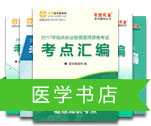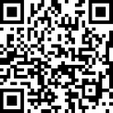Diabetes: treatment and complications - the nurse's role
糖尿病:护士的作用
Mary Burden, RGN 玛丽·伯登
The aim of treatment for diabetes is to alleviate the symptoms, maintain quality of life and slow the progression of specific and non-specific complications.
糖尿病的治疗目的是缓解症状、维持生活质量和减缓特异性和非特异性并发症的发展。
The nurse's role in diabetes care 护士在糖尿病护理中的作用
The nurse's role in diabetes care may be as a specialist or as part of general care - primary or secondary. Wherever care is given, the emphasis is always on patient self-management.
护士在糖尿病护理中既可以发挥专家的作用,也可以只承担其中的部分护理工作。不管是何种场所的护理,都应强调病人的自我护理。
Self-care is key to the management of diabetes. Self-care should resume as soon as possible. Nevertheless, when a person with diabetes does need assistance this needs to be from knowledgeable health professionals.
自我护理是处理糖尿病的关键,开始得越早越好。不过,当糖尿病患者确实需要帮助时,就必须由知识丰富的专业健康人士提供。
Diabetes education in the UK has, traditionally, been undertaken by diabetes specialist nurses alongside their other clinical, management and research roles. Some teaching is done on a one-to-one basis, but health professionals have come to realise that people with diabetes learn a lot from each other, so group education, to which partners and members of the family are also invited, has become the norm. It is important to invite to education sessions the person who shops for, and cooks, the family food. This may be a family member but it could be a home help or a carer in a care home.
传统上,英国的糖尿病教育是由糖尿病专科护理师承担的,他们还承担着其他临床、治疗和研究工作。有些教育是以一对一方式进行,但健康专业人士已逐渐认识到,糖尿病患者互相间也能学到很多东西,因此,小组教育已经成为一种标准,它还可以邀请同伴或家人参加。邀请家庭食品采购和烹制人员加入教育也很重要。他可能是家庭成员之一,也可能是家务女工或疗养院护理员。 医.学教育网整理
As the number of people in the community who have diabetes has increased, practice nurses and district nurses have taken on tasks that were previously in the domain of the diabetes nurse specialist. They will therefore be involved in planning and delivering diabetes education for patients. Today, many people with diabetes, especially those with type 2, will never have seen a diabetes nurse specialist, since these nurses tend to be hospital-based.
随着社区内糖尿病人数的增加,执业护士和地区护士已经承担了过去由糖尿病护理专家所从事的很多工作。因此,他们也将参与糖尿病教育的计划和实施。今天,由于糖尿病护理专家都是在医院工作,很多糖尿病患者,特别是二型糖尿病患者,都看不到这些护理专家。
Today's technology has resulted in many changes in the way people obtain advice about health. Using telephone or the internet are now common ways of accessing health information. Consequently, more and more people are coming to health professionals armed with useful (and sometimes confusing) information that they have obtained from these sources or maybe from the radio, television and friends. Interactive health advice through digital television is being piloted in Birmingham and some health promotion agencies have touch screen programmes and interactive CD-roms.
当今技术的发展,使人们的健康咨询方式发生了很大变化。电话或英特网已经成为获取健康信息的常用手段。结果,越来越多的人开始求助于拥有有用(有时也是令人迷惑)的信息的健康专业人士,他们的信息或来自上述渠道,或来自电台、电视和朋友。伯明翰正在尝试举办数字电视互动式健康咨询节目,一些健康促进机构已经接触这些屏幕节目和互动CD光盘。
This increased choice for patients should be welcomed. It may mean that nurses' roles will change and that they will no longer be the first information-givers, but other important roles will develop. These will include interpreting what the information means to people individually and to their friends and relatives, and creating forums for discussions about how to put the advice into action.
这为病人提供了更多的选择,应该受到欢迎。这可能意味着,护士的角色将发生变化,她们将不再是第一个提供信息的人,新的重要角色将出现,包括解释信息对个人及其朋友和亲属的意义,创办论坛,讨论如何实施建议。
Nurses caring for patients with diabetes need to be working towards the same objectives, therefore target-setting and determining priorities for managing their condition are important aspects of care. It is known from both the Diabetes Control and Complications Trial (DCCT, 1993) and the UK Prospective Diabetes Study Group (UKPDS, 1998) that it is possible to prevent diabetic complications, and that, if they do appear, their worsening progression can be slowed. The maintenance of good glycaemic control is therefore vital.
护理糖尿病患者的护士必须有共同的工作目标,因此,制订目标和决定病情优先处理顺序便成为护理的重要因素。研究表明,糖尿病并发症可以预防。如果确实出现并发症,其恶化进程也可以减缓。关键是要控制血糖。
The target for glycated haemoglobin (HbA1c) for those with type 1 diabetes is 7.5% (for type 1) and below 7% for those with type 2. Blood pressure is known to be a factor in diabetic complications and should be below 140/80mmHg for both type 1 and type 2 diabetes - the lower the better, but without feeling the symptoms of hypotension, such as dizziness. Total cholesterol should be below 5 mmol/L, with an HDL of greater than 1.0, and LDL less than 3. If there are complications, these targets may be set even more tightly to prevent their worsening. Patients need to know what the recommended levels are for these tests so they can ask for the results of the investigations and make sense of the information they are given. In this way they will be able to see for themselves if they need more treatment and whether or not they need to make changes to lifestyle and food choices.
一型糖尿病患者的糖化血红蛋白目标是7.5%,二型为低于7%.血压是导致糖尿病并发症的一个因素,两种糖尿病的血压都应低于140/80mmHg,且越低越好。当然应以不出现低血压症状为宜,如头晕。全胆固醇应低于5mmol/L,HDL高于1.0,LDL低于3.如有并发症,制定目标时应更加仔细,以防止加剧。病人应知道这些化验的建议值以便索要检查结果,弄懂信息意义。这样,他们就能自己清楚是否需要更多的治疗,是否需要改变生活方式及饮食。
Screening for complications 并发症的筛检
Routine screening for diabetic complications is often the nurse's responsibility. This will include urine testing for protein as a check on renal function, taking blood for lipid estimations, measuring blood pressure, examining the eyes and the feet.
糖尿病的常规筛检通常是护士的责任,包括肾功能的蛋白尿检,血脂检查,测血压及检查眼睛与双脚。
Screening for retinopathy: This is performed when pupils are dilated, either by fundoscopy or retinal photography. The nurse's role is to explain what will happen during the procedure and what the findings mean. The nurse may also measure visual acuity. Some patients may need to be referred for laser photocoagulation, and again, the nurse should be able to offer information and reassurance.
视网膜病筛检:眼底镜或视网膜镜检查,扩张瞳孔。护士的作用是解释操作时会发生的情况与检查结果的意义。护士还可以检查视敏度。有的病人可能需要进行激光凝固,因此,护士应能提供信息,安慰病人。
Screening for neuropathy: Patients with normal circulation, gait, and vision are at low risk of neuropathy. Advice about foot hygiene and the wearing of sensible shoes should be offered to these patients. When patients cannot feel their feet and their circulation is impaired through peripheral vascular disease, the risk of neuropathy is greatly increased. These patients will need to be advised not to rely on how their feet feel but to look at them every day to check for any damage and to seek assistance urgently if a problem occurs. This may need to be done by someone else if vision is a problem. Putting a mirror on the floor can be helpful for self-examination.
神经病变筛检:循环、步态和视力正常的病人神经病变风险小。应向病人提出足部卫生建议,提供合适的鞋子。当病人双足无感觉,外周血管病引起循环障碍时,神经病变危险就大幅增加。就要建议这些病人不要依赖足部感觉,而应每天检查双脚,看有无损伤,并在发生问题时立即寻求帮助。如视力不良,则需要由他人帮助进行。在地板上放一面镜子也有助于自我检查。
Temperature sense can be diminished in patients with neuropathy, so they must be advised not to use hot water bottles and to take care when stepping into a bath or sitting close to a source of heat.
患有神经病变的病人,温度觉降低,因此必须劝告他们不要使用热水瓶,告诫他们在踏进浴盆或坐在热源边上时要小心。
Neuropathy is assessed by checking the foot pulses (dorsalis pedis and post-tibial). If they are not palpable, a referral for vascular assessment and treatment may be necessary. An assessment using a hand held Doppler can be useful to detect whether there is peripheral vascular insufficiency. Patients whose foot pulses are reduced or absent should be told that this puts their feet at risk and that they should take extra precautions to protect their feet. This may mean seeking care from a podiatrist, being fitted for special shoes with appropriate insoles, inspecting their feet daily and acting on any abnormalities discovered.
神经病变可通过检查足动脉搏动(足背和胫骨后)进行评估。如摸不到搏动,就应安排血管评估和治疗。手提式多普勒仪器有助于发现是否存在外周血管供应不足。足动脉搏动减少或无法扪及的,就告知其双脚已有危险,应加倍小心保护双脚。这可能意味着要寻求足医的护理,选用合适的填有鞋垫的鞋子,每天检查双脚,并对发现的任何异常采取措施。
Absent or reduced vibration sense is the first sign of neuropathy. This is measured by a tuning fork. If the vibration sense is absent or reduced, there is a risk of foot damage.
振动觉缺失或减弱是神经病变的第一体征。可通过音叉进行检查。如振动觉缺失或减弱,就有足部损伤危险。
To prevent amputations in patients with peripheral disease it is important to ensure early referral to a vascular surgeon. Early referral to an orthotist for special shoes can prevent amputation in the neuropathic foot.
为防止外周病患者截肢,重要的一点是要确保尽早安排血管外科医生。尽早安排矫形支具师制作特定的鞋子能够预防神经病变足的截除。
Nutrition advice: As for anybody, the usual advice for healthy eating is to have at least five pieces of fruit and vegetables a day; to restrict alcohol to fewer than three units a day for women or four units a day for men, and to limit salt intake. Calorie restriction is important if the individual is overweight, and advice should be given about having less fat overall, with proportionately more monosaturated and polyunsaturated fat. If the cholesterol level is above target, a referral should be made to the GP for possible treatment with a statin.
营养建议:对任何人而言,通常的健康饮食建议是:至少每天五片水果和蔬菜;减少酒精,女士一天少于三个单位,男子少于四个单位;限盐;如患者体胖,应限制热量摄入,少吃盐,少吃脂肪,但可按适当比例增加单饱和和多不饱和脂肪。如胆固醇高于指标,应安排全科医生用抑制素进行治疗。
Patients who are having difficulty achieving their targets on nutrition should be given an opportunity to see a dietitian (preferably a diabetes specialist dietitian).
达到营养指标有困难的病人,应给予机会去看营养师((最好是糖尿病专科营养师
Conclusion 结论
When screening for complications and running diabetes clinics, nurses need to be aware that psychological and social issues will have a bearing on how patients view their diabetes and whether they are likely to make lifestyle changes.
当进行糖尿病筛检及糖尿病门诊时,护士要知道精神和社会因素对病人对自身糖尿病的看法和如何改变生活方式有很大影响。
The role of the patient with diabetes is as an active decision-maker and the role of the nurse in this case is to provide information, direction and support. The nurse will be assessing risk, so that appropriate interventions can be made at appropriate times. In addition, the nurse should regard every annual review or screening visit as an opportunity to find out what information the patient has and to fill in any gaps, supported by educational materials. Exploring why patients may not feel able to make changes to their lifestyle and to undertake suggested treatments may help the nurse to suggest actions that such patients are likely to follow.
糖尿病人应是一个积极的决策者,护士则是资料、指导和支持的提供者。护士对风险进行评估,就可以在适当的时候采取适当的措施。而且,护士应将每次的年度复查或筛查视为发现病人掌握何种信息、弥补欠缺的好机会。探索为什么病人会觉得自己无法改变自己的生活方式,无法了解建议的治疗,这有助于护士向这类病人提供他们愿意接受的行动建议。










 扫一扫立即下载
扫一扫立即下载


